#mary marron
Text

I found this robot dog at the vintage warehouse yesterday for only £6! Sadly she's a little sun damaged, but I don't mind. She reminds me of one of my OCs, so she's taken her place on top of my printer for now (Surrounded by some new plants).
Other figures:
- Marrion Sensei Mini figure
- Love Live Mari "Our Future Selves Know" Figure
- Unknown Hello Kitty mini figure
- Unknown Popmart figure
- Isara Mao box Figure
#anime#anime collector#anime figure collection#anime figure#anime figure collector#figure collection#figure collector#marron sensei#2000s#2000s toys#2000s nostalgia#robot dog#web#retro tech#kidcore#collectorcore#weebcore#otakucore#love live#mari ohara
16 notes
·
View notes
Text

Marie-Hélène Arnaud in natural brown Autumn Haze EMBA mink coat by Marron Fourrures. Photo Virginia Thoren, 1956.
Marie-Hélène Arnaud en manteau de vison brun naturel Autumn Haze EMBA par Marron Fourrures. Photo by Virginia Thoren 1956.
#marie-hélène arnaud#virginia thoren#marron fourrures#1956#fashion 50s#fall/winter#automne/hiver#mink coat#manteau de vison#emba#autumn haze
23 notes
·
View notes
Text



Joanna Marie Kutkina
Née en 1997, aux USA (origines : russes et turques)
crédits avatars : 1. @nereidestuff 2. @hoodwinkme 3. @bycosmiclight
Note : si vous refusez que vos créations ne soient utilisées sur ce tumblr, veuillez nous avertir afin que l'on respecte votre choix.
#joanna kutkina#joanna marie kutkina#femme#1990#f. 1990#f. brune#f. blonde#f. yeux marrons#f. amérique nord#f. eurasie#f. moyen orient
3 notes
·
View notes
Text

When your bestie needs you to take care of her cat.
But you hate cats.
(I headcanon that King's cat, Marron, is a brown, tabby-patterned domestic shorthair, as "marron" is French for "brown.")
#kof#king of fighters#blue mary#fatal fury#fanart#yeah ngl this is kinda lazy#but the background tho#Marron's kinda fat okay#King free feeds him because of her schedule but he sorta blew up#i totally used a photo of colby brock as a reference#i can't find it to upload it atm tho#i just realized that that brown looks more like gray#fuck
6 notes
·
View notes
Text

EASTER DIVINE ISSUE: the Hunter with her catch!
Vera Sol. Marie and Viola LeBlanche as made it to the catch! Yes Vera did carry this short single mom all day.
@adrianasunderworld @writing-heiress @mangacupcake
#twisted wonderland#Twst oc#twisted wonderland ocs#Vera Sol. Marie#Vera Hunt#Viola LeBlanche#Marron draws#marron ocs#marrondrawsalot#Marrondraws#Divine Issues: Milfs
12 notes
·
View notes
Text
Winter 2023 Blog Update (Part 3 of 6) ~ Lessons Learned: Conflict Management
Winter 2023 Blog Update (Part 3 of 6) ~ Lessons Learned: Conflict Management
#SelfHelp #ConflictManagement #DefenseMechanism #MarkBracket #BrenéBrown #GaborMaté #ObjectiveFeedback #JohnLencioni #EmotionalIntelligence #AnneDuke #CognitiveBias #Sadhguru
If we live long enough, it happens to us all: The world, full of cold indifference to our golden-calf agendas, infiltrates our beating heart with its ragged claws—and pulls. With a single gesture, the ego is uprooted, leaving our bare awareness of self throbbing in monolog: “Feel! CONNECT!! Change! GROW!!”
Eventually, we all stumble into conflicts that trigger us, challenging our self-awareness…
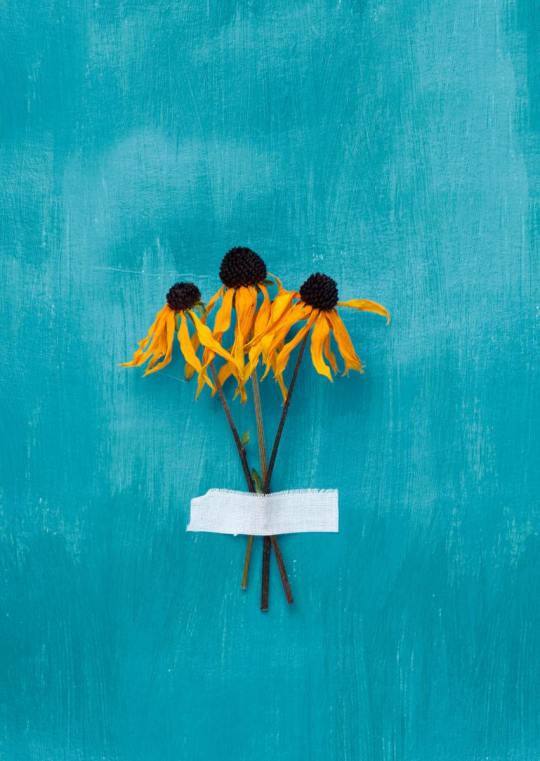
View On WordPress
#Anne Duke#Anne-Marie Marron#Boundaries#Brené Brown#Cognitive Bias#Conflict Management#Conflict Resolution#Decision Making#Defense Mechanisms#Dr. Gabor Maté#Elizabeth Earnshaw#Emotional Affirmation#Emotional Intelligence#Empathy#Growth#Healing#Impact Theory#Interpersonal Boundaries#John Lencioni#Neel Burton#Objective Feedback#Personal Boundaries#Personal Update#Pscyhology of Emotions#Rich Roll#Sadhguru#The Joe Rogan Experience#The Tim Ferris Show#Tom Bilyeu#Tom Karl
0 notes
Text
ミルフィーユ 和栗( ・∇・)このシリーズは美味しいでございますが量は少なく感じる

0 notes
Text
Can I say something cursed? Ok I’ll do it:
Rose Vilaine, Dieudonné, Alexandre Mahmoud, SouteQuaranteQuatre, Saint-Jean, Claire, NoirAmer, Alexandra Aimant, Les Kouleurs, Fred(Éric) De Palme, Fleurette, Saints Français, Emma Marron, Lauraine, Grande Maman, François et Philippe, Philippe Marie Fantassins, Angeline Mangue, Geôlier, Petites mains (with a bit of fantasy daje), Cher, Annelise, Gazelle, Le Vol, Alfa, D’argent D’amis, La Triste, Le Trois, Monsieur Pluie, Riches et Pauvres
#I told you it was cursed#ok goodnight before I get booed or worse#sanremo#sanremo 2024#I admit I cheated for a few I used their real names and no stage names#and took some last names as well because I didn’t know what to put#the order is how they arrived on the carpet#ahhh forgot the kolors I just added them in a random order sorry
26 notes
·
View notes
Text
RE: Was Baron Samedi worshiped in New Orleans prior to the late 20th century?
This one is also about the actual lwa.
Baron Samedi can aptly be described as not just the most iconic lwa, but one of the most iconic things from New Orleans Voodoo. Ironically, I have only found inconclusive evidence that he was worshiped in New Orleans during the 19th or early 20th centuries.
In American popular media, Baron Samedi is frequently conflated with other Haitian deities, called the Gede. The real-life Baron Samedi has his origins in Haitian Vodou, as does Maman Brigitte (Gran Brijit). The Haitian lwa are derived from African deities, among the most important being the Dahomean trickster god Legba (himself, derived from the Yoruba deity Eshu). Over the course of Haitian history, Dahomean Legba was refracted into Papa Legba, Met Kalfou, and the Gede - by extension, the Bawons, including Baron Samedi. This explains why the Gede are trickster deities of sexuality and liminality, who embrace all that is taboo - just like Dahomean Legba!
19th Century New Orleans Voodoo was greatly influenced by Haitian Vodou, due to the massive influx of Haitian refugees that arrived in the Crescent City after the Haitian Revolution. Following the post-Revolution migration wave, several Haitian lwa became features of New Orleans Voodoo, including:
Papa Legba → “Papa Limba” or “La Bas”, syncretized with St. Peter
Damballah → “Daniel Blanc”, syncretized with St. Michael
Agassu → “Yon Sue”, syncretized with St. Anthony
Ogou Feray could have also been worshiped as “Joe Ferraille” (“Joe Feray”), and Ayizan Velekete as “Vériquité”. While the Erzulies were not directly worshiped per se, veneration of Mother Mary was a key feature of 19th century New Orleans Voodoo. (The Erzulies are syncretized with Mother Mary.)
(I should also note that, in New Orleans, the lwa were called “spirits”, while Bon Dieu/Bondye was simply called “God”)
During the 19th century, the two most important lwa were probably Papa Legba - the Doorkeeper - and Damballah - the most ancient of the lwa. This would explain why their names appear most frequently in 19th- and 20th-century sources, especially in large scale rituals. Damballah might have been refracted into multiple deities, including “Daniel Blanc” and “Zombi the Snake God” – a deity famously associated with Marie Laveau. Others argue that “Grand Zombi” is actually derived from the Kongo supreme deity Nzambi Mpungu, or an invention fabricated by journalists.
A third key deity – “Onzancaire” / “Monsieur Assonquer” – might have been associated with Ogou Feray – one of the most important Haitian lwa. However, the origins of “Onzancaire” are elusive. Because so many different theories have been proposed, I do not know where his true origins lie.
Other deities of non-Haitian origin were also features of New Orleans Voodoo. St. Marron (Jean St. Malo) was the New Orleanian folk saint of runaway slaves. Mother Leafy Anderson – founder of the Spiritual Church Movement in New Orleans – introduced worship of the Native American Saint Black Hawk (see: Kodi A. Roberts (2015) Voodoo and Power: The Politics of Religion in New Orleans, 1881–1940). My understanding is that “Dr. John” (Jean Montaigne) was also deified, in a similar manner to St. Black Hawk. Orisha, such as Shango and Oya, may too have been worshiped. Other deities are listed here and here.
Baron Samedi is conspicuously absent. I think this has to do with the history of Haitian Vodou. Prior to the Haitian Revolution, Haitian Vodou was less of an organized religion, described as a "widely-scattered series of local cults" (see: The Social History of Haitian Vodou, p. 134). It was between the years 1804 and 1860 that Haitian Vodou began to stabilize into a clear predecessor of its present form. (see: The Social History of Haitian Vodou, p. 139) This period of stabilization took place after the migration wave of the early 19th century, which could explain why key features of Haitian Vodou are missing from 19th century New Orleans. For example, I have yet to find evidence that division of the Petwo and Rada lwa made it over to American soil. The refraction of Dahomean Legba might have never been transmitted by Haitian refugees, which would explain the absence of Met Kalfou and the Gede/Bawons from worship.
This too explains why the Papa Legba of American history was both Doorkeeper AND Guardian of the Crossroads. It has been theorized that the legendary “Devil at the Crossroads” was actually Met Kalfou. However, this “Devil” does not match the appearance of Kalfou, described as "no ancient, feeble man...huge and straight and vigorous, a man in the prime of his life." Instead, the one at “the Crossroads” appears as a limping old man who loves music and dogs (“Hellhound on my Trail”). It’s Papa Legba!
Rather than Kalfou, I think American Papa Legba actually inherits his more menacing attributes from Eshu. This would explain why he walks with a limp (like Eshu), is notoriously vengeful (like Eshu), and is sometimes described as androgynous (like Eshu!).
In any case, the Papa Legba of American history can be clearly traced back to Haiti. His appearance as a limping old man is inherited from Haitian Papa Legba; his love of dogs and music from Dahomean Legba. 19th century sources clearly identify him with Saint Peter (“St. Peter, St. Peter, open the door;”) The same cannot be said for Baron Samedi. He was probably not syncretized with St. Expedite, because St. Expedite “did not achieve popularity until the late 1800s or early 1900s in New Orleans” – long after the Haitian migration wave.
I have found one compelling source that places worship of Baron Samedi in 19th century New Orleans. Creole author Denise Alvarado is something of an expert on this topic, her being born and raised in New Orleans. In Witch Queens, Voodoo Spirits, and Hoodoo Saints: A Guide to Magical New Orleans (2022), Denise Alvarado identifies a “Spirit of Death” with Baron Samedi / Papa Gede. The most convincing piece of evidence comes from the second interview, in which the interviewee describes a ceremony where attendees donned purple robes. The color purple has been historically associated with Papa Gede (by extension, Baron Samedi).
That being said, I do think the evidence Alvarado provides is tenuous. Without additional context, it’s difficult to say whether the purple robes are truly linked to the Haitian lwa. The other newspaper article sounds rather sensationalized. The 19th century saw horrendous news coverage of New Orleans Voodoo, where reporters would exaggerate or straight-up fabricate details to demonize Vodouisants. The reporter’s description of the spirits of death does not align with the Haitian Gede or Bawons. It is important to remember that New Orleans Voodoo is not entirely Haitian in origin. Several other traditional African spiritualities are woven into New Orleans Voodoo. Prior to the Haitian migration wave of the early 19th century, one of the main influences was Kongo spirituality, in which ancestor veneration is central. Additionally, the newspaper cited is from the year 1890 – years after Marie Laveau’s death. The reliability of this article is therefore questionable. I think this could be a Damballah / “Grand Zombi” situation, where this “Spirit of Death” bears superficial resemblance to the lwa but isn’t actually him. It is also possible that he is simply a fabrication by journalists.
The defamation of Vodou continued into the early 20th century, as Haiti was occupied by the U.S. between the years 1915 and 1934. I don’t see how worship of the Gede/Bawons could have been transmitted to New Orleans between the end of the Haitian migration wave and year 1934. There’s a good chance that Baron Samedi / Papa Gede only properly became features of New Orleans Vodou during the revitalization movement of the late 20th century.
As such, I propose two hypotheses:
Baron Samedi was not properly worshiped in New Orleans until the late 20th century. He quickly rose in popularity, as he was easily grafted onto the pre-existing worship of the spirits of the dead (ancestors).
Alvarado has correctly identified Baron Samedi / Papa Gede with the “Spirit of Death”; however, this “Spirit of Death” was a radical departure from his Haitian predecessor, taking on a markedly different form from the lwa.
But that’s all just a Theory… A GAME THEORY!!!
…Anyways, annotated bib:
Marshall, Emily Zobel. American Trickster: Trauma, Tradition and Brer Rabbit. Rowman & Littlefield, 2019.
Chapter 1 ("African Trickster in the Americas") describes Dahomean Legba’s origins in the Yoruba deity Eshu.
Cosentino, Donald. "Who is that fellow in the many-colored cap? Transformations of Eshu in old and new world mythologies." Journal of American Folklore (1987): 261-275. https://www.jstor.org/stable/540323.
From the abstract: “Myths of Eshu Elegba, the trickster deity of the Yoruba of Nigeria, have been borrowed by the Fon of Dahomey and later transported to Haiti, where they were personified by the Vodoun in the loa Papa Legba. In turn, this loa was refracted into the corollary figures of Carrefour and Ghede.” Accessed here: https://www.centroafrobogota.com/attachments/article/24/17106647-Ellegua-Eshu-New-World-Old-World.pdf
Haitian immigration : Eighteenth and Nineteenth Centuries. The African American Migration Experience. https://www.inmotionaame.org/print.cfm@migration=5.htm
Describes post-Haitian Revolution migration wave like so: “the number of immigrants [from Haiti to New Orleans] skyrocketed between May 1809 and June 1810… The 1809 migration brought 2,731 whites, 3,102 free persons of African descent, and 3,226 enslaved refugees to the city, doubling its population.”
Fandrich, Ina J. “Yorùbá Influences on Haitian Vodou and New Orleans Voodoo.” Journal of Black Studies, vol. 37, no. 5, 2007, pp. 775–91. JSTOR, http://www.jstor.org/stable/40034365. Accessed 23 June 2024.
Mentions worship of Ogou Feray as “Joe Ferraille”. Fandirch herself cites Long, C. M. (2001). Spiritual merchants. Knoxville: University of Tennessee Press, p. 56: https://archive.org/details/spiritualmerchan0000long/page/56/mode/2up?
Long, Carolyn Morrow. A New Orleans voudou priestess: The legend and reality of Marie Laveau. University Press of Florida, 2007, p. 247: https://books.google.com/books?id=_XzSEAAAQBAJ&pg=PT247#v=onepage&q&f=false
Mentions worship of Ayizan Velekete as (the male) “Vériquité”.
Anderson, Jeffrey E. Hoodoo, voodoo, and conjure: A handbook. Bloomsbury Publishing USA, 2008, p. 15: https://books.google.com/books?id=TH7DEAAAQBAJ&pg=PA15&lpg=PA15#v=onepage&q&f=false
Relevant quote: "Blanc Dani, Papa Lébat, and Assonquer make the most frequent appearances in both nineteenth- and twentieth-century sources. The first two, in particular, figure prominently in large-scale rituals."
Humpálová, Denisa. "Voodoo in Louisiana." (2012). https://dspace5.zcu.cz/bitstream/11025/5338/1/BP%20Denisa%20Humpalova%202012.pdf
One of several sources that identifies “Grand Zombi” with Nzambi Mpungu.
Long, Carolyn Morrow. A New Orleans voudou priestess: The legend and reality of Marie Laveau. University Press of Florida, 2007, p. 247: https://books.google.com/books?id=_XzSEAAAQBAJ&pg=PT247#v=onepage&q&f=false
Posits that “Grand Zombi” could be derived from Nzambi Mpungu, or "may be the invention of journalists inspired by "zombie tales" of Haiti's infamous living dead, combined with Moreau de Saint-Méry’s endlessly repeated description of a snake-worshiping ceremony in colonial Saint Domingue."
Anderson, Jeffrey E. Voodoo: An African American Religion. LSU Press, 2024, p. 46: https://www.google.com/books/edition/Voodoo/O-v3EAAAQBAJ?hl=en&gbpv=1&dq=%22assonquer%22+%22azewe%22+vodou&pg=PA46&printsec=frontcover
Describes several possible origins for the elusive “Onzancaire”, including a theory that he was a deity related to Ogou Feray.
Long, Carolyn Morrow. A New Orleans voudou priestess: The legend and reality of Marie Laveau. University Press of Florida, 2007, p. 236: https://books.google.com/books?id=_XzSEAAAQBAJ&pg=PT236#v=onepage&q&f=false
One of several sources to describe St. Marron (Jean St. Malo).
Roberts, Kodi A. Voodoo and Power: The Politics of Religion in New Orleans, 1881-1940. LSU Press, 2015, p. 82: https://books.google.com/books?id=EWOkCgAAQBAJ&pg=PT82&lpg=PT82
Describes how Mother Leafy Anderson (founder of the Spiritual Church Movement) “found” St. Black Hawk, introducing him to New Orleans Voodoo.
Alvarado, Denise. Witch Queens, Voodoo Spirits, and Hoodoo Saints: A Guide to Magical New Orleans. Weiser Books, 2022, p. 39: https://books.google.com/books?id=ktlWEAAAQBAJ&pg=PA39&lpg=PA39#v=onepage&q&f=false
Posits that high priestess Betsy Toledano worshiped the Orisha Shango and Oya during the 19th century.
Anderson, Jeffrey E. Hoodoo, voodoo, and conjure: A handbook. Bloomsbury Publishing USA, 2008, p. 15: https://books.google.com/books?id=TH7DEAAAQBAJ&pg=PA15&lpg=PA15#v=onepage&q&f=false
List of deities worshiped in 19th century New Orleans Voodoo.
Alvarado, Denise. Witch Queens, Voodoo Spirits, and Hoodoo Saints: A Guide to Magical New Orleans. Weiser Books, 2022, p. 126: https://www.google.com/books/edition/Witch_Queens_Voodoo_Spirits_and_Hoodoo_S/ktlWEAAAQBAJ?hl=en&gbpv=1&pg=PA126
Another list of deities worshiped in 19th century New Orleans Voodoo.
Mintz, Sidney & Trouillot, Michel-Rolph (1995) “The social history of Haitian Vodou” in Cosentino, Donald J., ed., Sacred Arts of Vodou, Chapter 4. LA: UCLA Fowler Museum, 123-47. P. 134: https://ghettobiennale.org/files/Trouillot_Mintz_LOW.pdf
Describes Haitian Vodou as a "widely-scattered series of local cults" prior to the Haitian Revolution.
Mintz, Sidney & Trouillot, Michel-Rolph (1995) “The social history of Haitian Vodou” in Cosentino, Donald J., ed., Sacred Arts of Vodou, Chapter 4. LA: UCLA Fowler Museum, 123-47. P. 139: https://ghettobiennale.org/files/Trouillot_Mintz_LOW.pdf
Describes the stabilization of Haitian Vodou into a predecessor of its current form. This occurred between the years following the Haitian Revolution and year 1860.
Deren, Maya. Divine Horsemen : The Living Gods of Haiti. New Paltz, NY: McPherson, 1983 (originally published in 1953), p. 101: https://archive.org/details/divinehorsemenli00dere/page/100/mode/2up
Description of Kalfou (Carrefour) as "no ancient, feeble man...huge and straight and vigorous, a man in the prime of his life." Deren conducted her ethnographic work during the 1940s and 1950s.
Marvin, Thomas F. “Children of Legba: Musicians at the Crossroads in Ralph Ellison’s Invisible Man.” American Literature, vol. 68, no. 3, 1996, pp. 587–608. JSTOR, https://doi.org/10.2307/2928245. Accessed 23 June 2024.
Description of “The Devil at the Crossroads” as a musical genius and “limping old black man”: “Most versions of this story instruct the aspiring musician to bring his instrument to a lonely crossroads at midnight and await the arrival of a limping old black man who will tune the instrument, play it briefly, and then return it endowed with supernatural power."
Robert Johnson’s song “Hellhound on My Trail” identifies “The Devil at the Crossroads” with Papa Legba, who is associated with dogs.
Long, Carolyn Morrow. A New Orleans voudou priestess: The legend and reality of Marie Laveau. University Press of Florida, 2007, p. 244: https://books.google.com/books?id=_XzSEAAAQBAJ&pg=PT244&lpg=PT244#v=onepage&q&f=false
Relevant quote: "Mary Washington, born in 1863, said she was trained in the arts of Voudou by Marie Laveau. She remembered a song that was sung at the weekly ceremonies: "St. Peter, St. Peter open the door; I am callin' you, come to me; St. Peter, St. Peter open the door." Mrs. Washington explained that "St. Peter was called La Bas, St. Michael was Daniel Blanc, and Yon Sue was St. Anthony." She also mentioned a spirit called Onzancaire."
Alvarado, Denise. The Magic of Marie Laveau: Embracing the Spiritual Legacy of the Voodoo Queen of New Orleans. Weiser Books, 2020, p. 57: https://books.google.com/books?id=SZOMDwAAQBAJ&pg=PA57&lpg=PA57#v=onepage&q&f=false
Relevant quote: “Baron Samedi remains a popular and powerful force in New Orleans Voudou today, along with his wife Manman Brigit. He is syncretized with St. Expedite, among the most popular of saints in New Orleans. We do not hear of St. Expedite in association with Marie Laveau, however, because he did not achieve popularity until the late 1800s or early 1900s in New Orleans (Alvarado 2014).”
Alvarado, Denise. Witch Queens, Voodoo Spirits, and Hoodoo Saints: A Guide to Magical New Orleans. Weiser Books, 2022, pp. 127-128: https://books.google.com/books?id=GsofEAAAQBAJ&pg=PA127&lpg=PA127#v=onepage&q&f=false
This is the strongest evidence I could find that Baron Samedi / Papa Gede was worshiped in 19th - early 20th Century New Orleans.
Deren, Maya. Divine Horsemen : The Living Gods of Haiti. New Paltz, NY: McPherson, 1983 (originally published in 1953), p. 107: https://archive.org/details/dli.ernet.505921/page/107/mode/2up?q=purple
Historical evidence that, since at least the 1940s, Papa Gede’s colors are “black or purple”. To this day, purple is associated with Baron Samedi and the Gede as a whole.
Long, Carolyn Morrow. A New Orleans voudou priestess: The legend and reality of Marie Laveau. University Press of Florida, 2007, p. 250: https://books.google.com/books?id=_XzSEAAAQBAJ&pg=PT250&lpg=PT250
Relevant quote: “The religion that evolved in nineteenth-century New Orleans and was embraced by Marie Laveau and her Voudou society combined traditions introduced by the first Senegambian, Fon, Yoruba, and Kongo slaves with Haitian Vodou, European magic, and folk Catholicism. It also absorbed the beliefs of blacks imported from Maryland, Virginia, and the Carolinas during the slave trade of the 1830s–1850s. These “American Negroes” were English-speaking, at least nominally Protestant, and practiced a heavily Kongo-influenced kind of hoodoo, conjure, or rootwork. New Orleans Voudou is therefore not identical to Haitian Vodou, but represents a unique North American blend of African and European religious and magical Traditions.”
Fandrich, Ina J. “Yorùbá Influences on Haitian Vodou and New Orleans Voodoo.” Journal of Black Studies, vol. 37, no. 5, 2007, pp. 775–91. JSTOR, http://www.jstor.org/stable/40034365. Accessed 23 June 2024.
Describes major Senegambian and Kongo influences on New Orleans Voodoo, prior to the Haitian Revolution. Relevant quote: “New Orleans's African population was Kongo dominated with a strong affinity with the spirits of the dead…Dahomeyan influence occurred only indirectly through the Haitian refugees who "flooded" the city after 1808. In 1809 alone, more than 10,000 Haitians arrived, and doubled the city's population. They brought their Vodou religion with them, which ultimately merged with the already existing New Orleans or Louisiana Voodoo traditions. During the French colonial regime, 80% of the enslaved Africans came from one single ethnic group: the Bamana (also called Bambara) people from the Senegal River basin (today's Senegal, Gambia, and Mali), most of them stemming from one single ethnic group, the Bambara people. The majority of the remaining 20% were Kongolese and some Dahomeyans (Hall, 1992). Despite their rather different geographical origins, these two cultures blend easily into one another. Eighteenth-century Louisiana Voodoo maintained a marked Senegambian flavor, with some Kongolese elements blended in, until the end of the 18th century.”
Dubois, Laurent. “Vodou and History.” Comparative Studies in Society and History, vol. 43, no. 1, 2001, pp. 92–100. JSTOR, http://www.jstor.org/stable/2696623. Accessed 23 June 2024.
An overview of the history of Haitian Vodou, as it pertains to U.S. history. Demonization of Vodou continued past the U.S. occupation of Haiti, until the late 20th century.
#between the two it is 100% papa legba who had a bigger impact on horror stories from the american south of the early 20th century#i think a lot of people would think it's baron samedi but no! it's the mischevious limping old man!#commentary#the loa (hazbin hotel)#baron samedi (hazbin hotel)#big papa legba
9 notes
·
View notes
Text
Black Clover Birthdays
Contains spoilers, as there are some spoiler-filled characters as well as spoilery name changes.
If this list is not complete, do say so in the comments. Characters who share birthdays are listed by known order of birth (e.g. 6/27: Drowa, Vanica, Gauche).
For every April or October baby, I will do a push-up. /j /lh

January
3: Alecdora Sandler
8: Mars
13: Gordon Agrippa
16: Revchi Salik
18: Rhya; Robero Ringert
20: Yosuga Mushogatake
29: Gaja
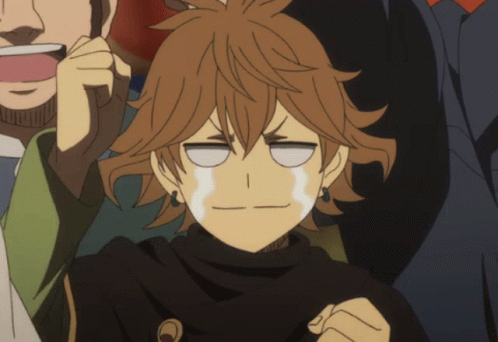
February
4: Kiato
5: Jozo Hanegatsuji
6: Finral Roulacase
12: Lumiere Silvamillion Clover; Henry Legolant
16: Licita
20: Grey
21: Lolopechka; Fragil Tormenta
26: Solid Silva

March
12: Fumito Mikuriya
16: Rill Boismortier
17: Sally
19: Nathan Agrippa
21: Dorothy Unsworth
22: Orsi Orfai
24: Fana (elf); Fana (human)
28: Theresa Rapual
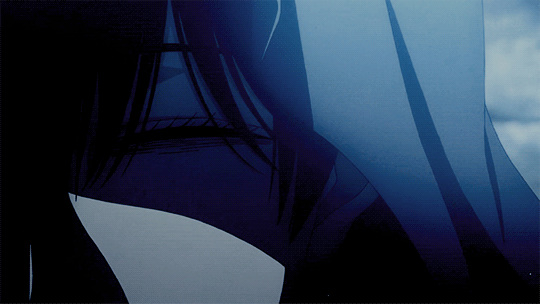
April
7: Magna Swing
10: Allen Fiarain
18: Rebecca Scarlet
19: Klaus Lunettes
20: Catherine
21: Svenkin Gatard; Hamon Casseus
22: Sekke Bronzazza
24: Kirsch Vermillion
26: Hirscher Ongg
28: Dante Zogratis
30: Nacht Faust

May
1: Morgen Faust
4: Siren Tium
9: Ichika Yami
13: Sol Marron
16: Vanessa Enoteca
20: Gaderois Godroc
23: Komari Imari
21: Morris Libardirt

June
1: Jack the Ripper
2: Finesse Calmreich
3: Charmy Pappitson
18: Nero/Secre Swallowtail
27: Drowa; Vanica Zogratis; Gauche Adlai
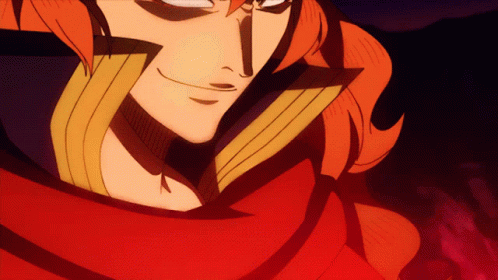
July
2: Lily Aquaria
4: Ladros
23: Ryuya Ryudo
26: Mereoleona Vermillion
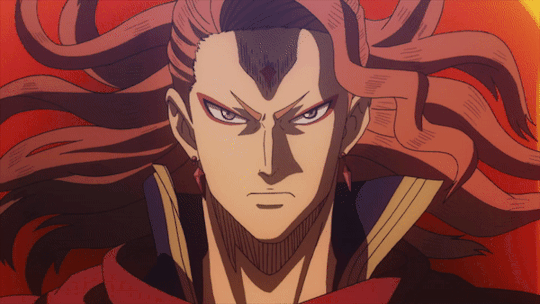
August
5: Fuegoleon Vermillion
13: Leopold Vermillion
26: Mimosa Vermillion
29: Daizaemon O'oka
31: Acier Silva
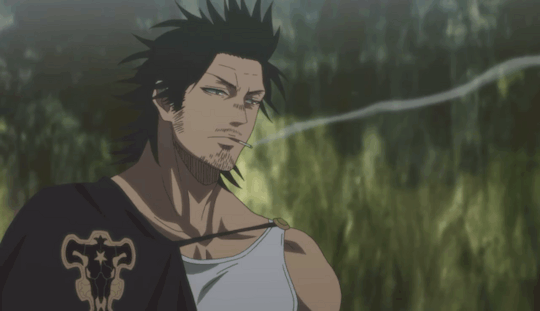
September
3: En Ringard
5: Gifso
12: Vetto
15: Dominante Code
17: Yami Sukehiro
18: Charla; Charlotte Roselei
19: Halbet Chevour
20: Jonna Agrippa
27: Langris Vaude
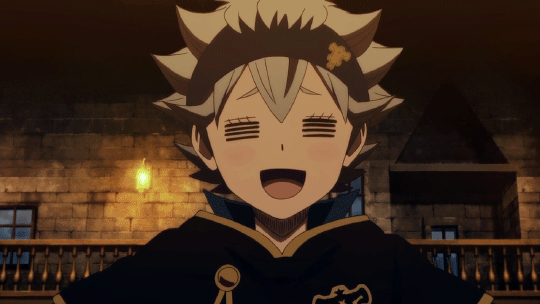
October
1: Licht
2: Fujio Tenmanyashiki
4: Asta; Yuno Grinberryall (not actual birthday, the date of being left at Hage’s orphanage)
5: Liebe (not actual birthday, the date of being found by Licita)
7: Fanzell Kruger
11: Rufel; Luck Voltia
14: Kaiser Granvorka
15: Julius Novachrono; Lucius Zogratis
16: Damnatio Kira
21: Marx Francois
22: Augustus Kira Clover
23: Nebra Silva
26: Mariella
27: Ginnojomorifuyu Kezokaku
28: Foyal Migusteau
29: Roxanne Agrippa

November
3: Queen of Witches
14: Heath Grice
15: Noelle Silva; Kahono

December
1: Lotus Whomalt
4: Ralph Niaflem
5: Gueldre Poizot
19: Zora Ideale
21: Ecra/Eclat; Marie Adlai
24: Patry; William Vangeance
27: Valtos
28: Zenon Zogratis
30: Nozel Silva
9 notes
·
View notes
Text
I don't really talk about my aus on here, but I'm pretty proud of the work I've put into this one so I thought I'd share
Nobody ask how long this took.
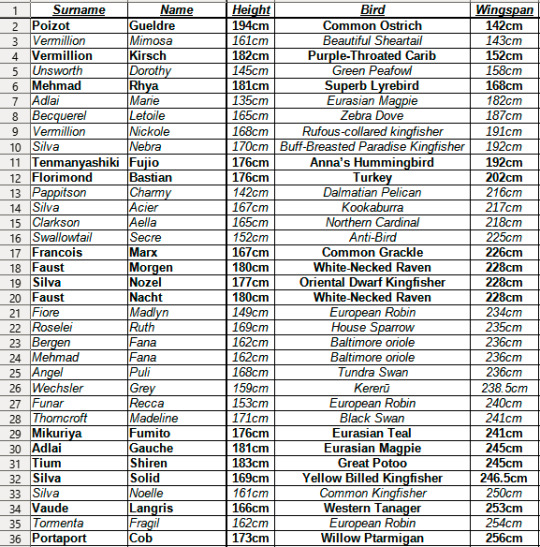
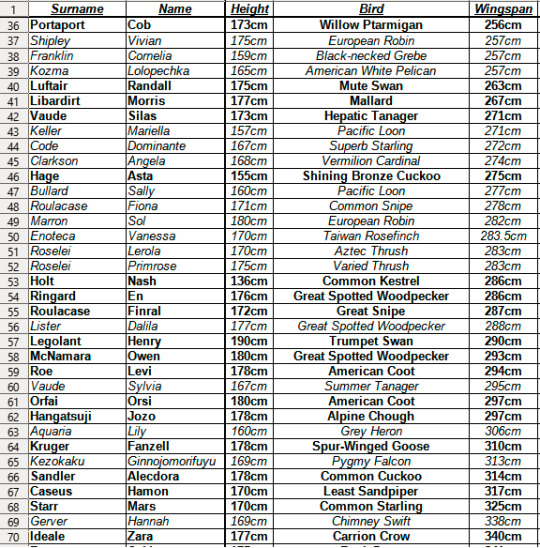
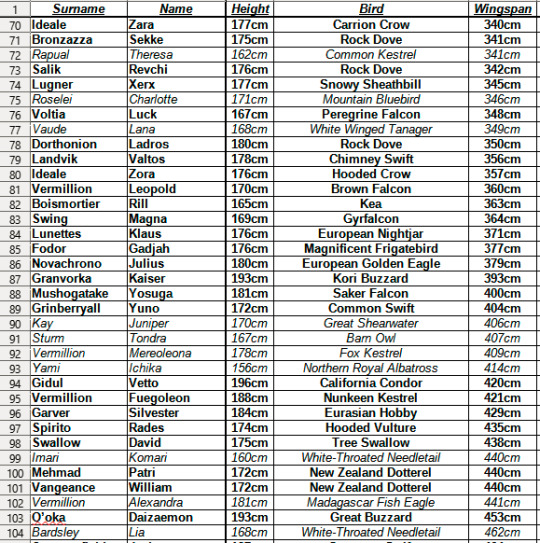

As per usual, several of the ocs on this list (Nickole, Bastian, Aella, Madlyn, Ruth, Madeline, Vivian, Cornelia, Silas, Angela, Primrose, Lerola, Dalila, Levi, Sylvia, Hannah, Juniper, Silvester, Alexandra and Alderbrand) belong to the lovely @crazedstoryteller, the rest of the ocs (Fiona, Lana, Tondra and Lia) are mine, and obviously canon chracters are canon
(alternate version of the table under the cut)
Surname Name Height Bird Wingspan
Poizot Gueldre 194cm Common Ostrich 142cm
Vermillion Mimosa 161cm Beautiful Sheartail 143cm
Vermillion Kirsch 182cm Purple-Throated Carib 152cm
Unsworth Dorothy 145cm Green Peafowl 158cm
Mehmad Rhya 181cm Superb Lyrebird 168cm
Adlai Marie 135cm Eurasian Magpie 182cm
Becquerel Letoile 165cm Zebra Dove 187cm
Vermillion Nickole 168cm Rufous-collared kingfisher 191cm
Silva Nebra 170cm Buff-Breasted Paradise Kingfisher 192cm
Tenmanyashiki Fujio 176cm Anna’s Hummingbird 192cm
Florimond Bastian 176cm Turkey 202cm
Pappitson Charmy 142cm Dalmatian Pelican 216cm
Silva Acier 167cm Kookaburra 217cm
Clarkson Aella 165cm Northern Cardinal 218cm
Swallowtail Secre 152cm Anti-Bird 225cm
Francois Marx 167cm Common Grackle 226cm
Faust Morgen 180cm White-Necked Raven 228cm
Silva Nozel 177cm Oriental Dwarf Kingfisher 228cm
Faust Nacht 180cm White-Necked Raven 228cm
Fiore Madlyn 149cm European Robin 234cm
Roselei Ruth 169cm House Sparrow 235cm
Bergen Fana 162cm Baltimore oriole 236cm
Mehmad Fana 162cm Baltimore oriole 236cm
Angel Puli 168cm Tundra Swan 236cm
Wechsler Grey 159cm Kererū 238.5cm
Funar Recca 153cm European Robin 240cm
Thorncroft Madeline 171cm Black Swan 241cm
Mikuriya Fumito 176cm Eurasian Teal 241cm
Adlai Gauche 181cm Eurasian Magpie 245cm
Tium Shiren 183cm Great Potoo 245cm
Silva Solid 169cm Yellow Billed Kingfisher 246.5cm
Silva Noelle 161cm Common Kingfisher 250cm
Vaude Langris 166cm Western Tanager 253cm
Tormenta Fragil 162cm European Robin 254cm
Portaport Cob 173cm Willow Ptarmigan 256cm
Shipley Vivian 175cm European Robin 257cm
Franklin Cornelia 159cm Black-necked Grebe 257cm
Kozma Lolopechka 165cm American White Pelican 257cm
Luftair Randall 175cm Mute Swan 263cm
Libardirt Morris 177cm Mallard 267cm
Vaude Silas 173cm Hepatic Tanager 271cm
Keller Mariella 157cm Pacific Loon 271cm
Code Dominante 167cm Superb Starling 272cm
Clarkson Angela 168cm Vermilion Cardinal 274cm
Hage Asta 155cm Shining Bronze Cuckoo 275cm
Bullard Sally 160cm Pacific Loon 277cm
Roulacase Fiona 171cm Common Snipe 278cm
Marron Sol 180cm European Robin 282cm
Enoteca Vanessa 170cm Taiwan Rosefinch 283.5cm
Roselei Lerola 170cm Aztec Thrush 283cm
Roselei Primrose 175cm Varied Thrush 283cm
Holt Nash 136cm Common Kestrel 286cm
Ringard En 176cm Great Spotted Woodpecker 286cm
Roulacase Finral 172cm Great Snipe 287cm
Lister Dalila 177cm Great Spotted Woodpecker 288cm
Legolant Henry 190cm Trumpet Swan 290cm
McNamara Owen 180cm Great Spotted Woodpecker 293cm
Roe Levi 178cm American Coot 294cm
Vaude Sylvia 167cm Summer Tanager 295cm
Orfai Orsi 180cm American Coot 297cm
Hangatsuji Jozo 178cm Alpine Chough 297cm
Aquaria Lily 160cm Grey Heron 306cm
Kruger Fanzell 178cm Spur-Winged Goose 310cm
Kezokaku Ginnojomorifuyu 169cm Pygmy Falcon 313cm
Sandler Alecdora 178cm Common Cuckoo 314cm
Caseus Hamon 170cm Least Sandpiper 317cm
Starr Mars 170cm Common Starling 325cm
Gerver Hannah 169cm Chimney Swift 338cm
Ideale Zara 177cm Carrion Crow 340cm
Bronzazza Sekke 175cm Rock Dove 341cm
Rapual Theresa 162cm Common Kestrel 341cm
Salik Revchi 176cm Rock Dove 342cm
Lugner Xerx 177cm Snowy Sheathbill 345cm
Roselei Charlotte 171cm Mountain Bluebird 346cm
Voltia Luck 167cm Peregrine Falcon 348cm
Vaude Lana 168cm White Winged Tanager 349cm
Dorthonion Ladros 180cm Rock Dove 350cm
Landvik Valtos 178cm Chimney Swift 356cm
Ideale Zora 176cm Hooded Crow 357cm
Vermillion Leopold 170cm Brown Falcon 360cm
Boismortier Rill 165cm Kea 363cm
Swing Magna 169cm Gyrfalcon 364cm
Lunettes Klaus 176cm European Nightjar 371cm
Fodor Gadjah 176cm Magnificent Frigatebird 377cm
Novachrono Julius 180cm European Golden Eagle 379cm
Granvorka Kaiser 193cm Kori Buzzard 393cm
Mushogatake Yosuga 181cm Saker Falcon 400cm
Grinberryall Yuno 172cm Common Swift 404cm
Kay Juniper 170cm Great Shearwater 406cm
Sturm Tondra 167cm Barn Owl 407cm
Vermillion Mereoleona 178cm Fox Kestrel 409cm
Yami Ichika 156cm Northern Royal Albatross 414cm
Gidul Vetto 196cm California Condor 420cm
Vermillion Fuegoleon 188cm Nunkeen Kestrel 421cm
Garver Silvester 184cm Eurasian Hobby 429cm
Spirito Rades 174cm Hooded Vulture 435cm
Swallow David 175cm Tree Swallow 438cm
Imari Komari 160cm White-Throated Needletail 440cm
Mehmad Patri 172cm New Zealand Dotterel 440cm
Vangeance William 172cm New Zealand Dotterel 440cm
Vermillion Alexandra 181cm Madagascar Fish Eagle 441cm
O’oka Daizaemon 193cm Great Buzzard 453cm
Bardsley Lia 168cm White-Throated Needletail 462cm
Summerfield Jack 197cm Common Swift 464cm
Agrippa Gordon 187cm Rüppell’s Vulture 468cm
Yami Sukehiro 183cm Wandering Albatross 476cm
Vermillion Alderbrand 185cm African Fish Eagle 493cm
Ryuudou Ryuuya 182cm Amsterdam Albatross 507cm
13 notes
·
View notes
Text

Pierre Balmain Haute Couture Collection Fall/Winter 1954-55. Marie-Thérèse wears a lamé brocaded frock coat with Persian designs of small pink, green and gold palmettes on a white wool, silk, acetate and metal background from Staron lined with brown mink, brown velvet toque and mink of the same tone.
Pierre Balmain Collection Haute Couture Automne/Hiver 1954-55. Marie-Thérèse porte une redingote en broché lamé à dessins persans de petites palmettes roses, verts et or sur fond blanc laine, soie, acétate et métal de Staron bordée de vison marron, toque en velours marron et vison de même ton.
Photo Mark Shaw.
#collection haute couture#pierre balmain#fashion 50s#1954-55#fall/winter#automne/hiver#french designer#french style#marie-thérèse#mark shaw#staron#evening coat#manteau de soirée
29 notes
·
View notes
Text



Joanna Marie Kutkina
Née en 1997, aux USA (origines : russes et turques)
📸 instagram ~ tiktok
crédits avatars : 1. @nereidestuff 2. @bycosmiclight 3. @claairdelune
Note : si vous refusez que vos créations ne soient utilisées sur ce tumblr, veuillez nous avertir afin que l'on respecte votre choix.
#joanna marie kutkina#femme#1990#f. 1990#f. brune#f. blonde#f. yeux marrons#f. amérique nord#f. eurasie#f. moyen orient
0 notes
Text


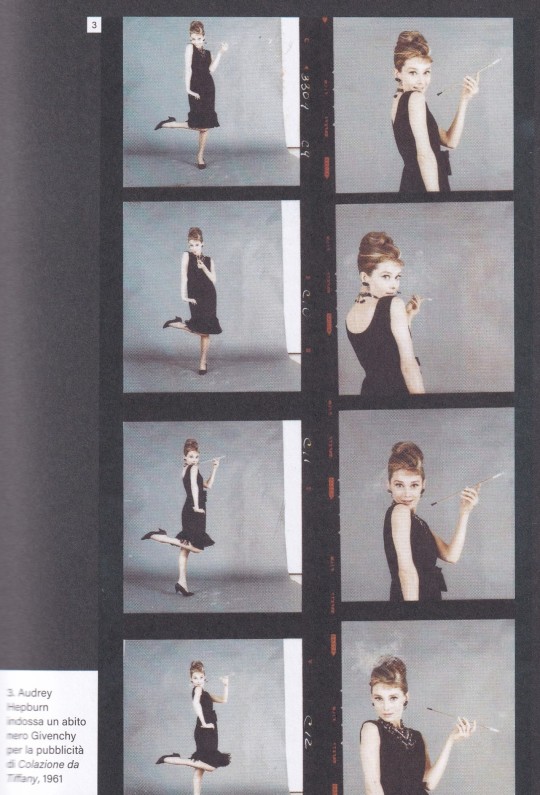
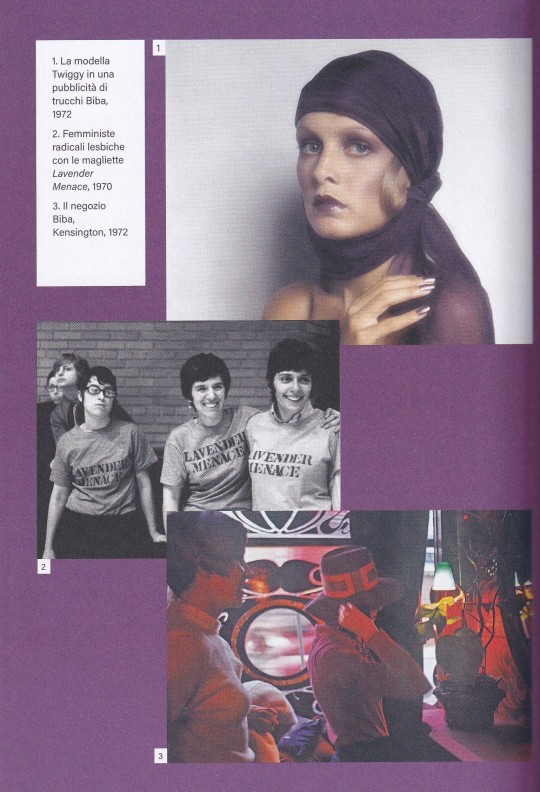
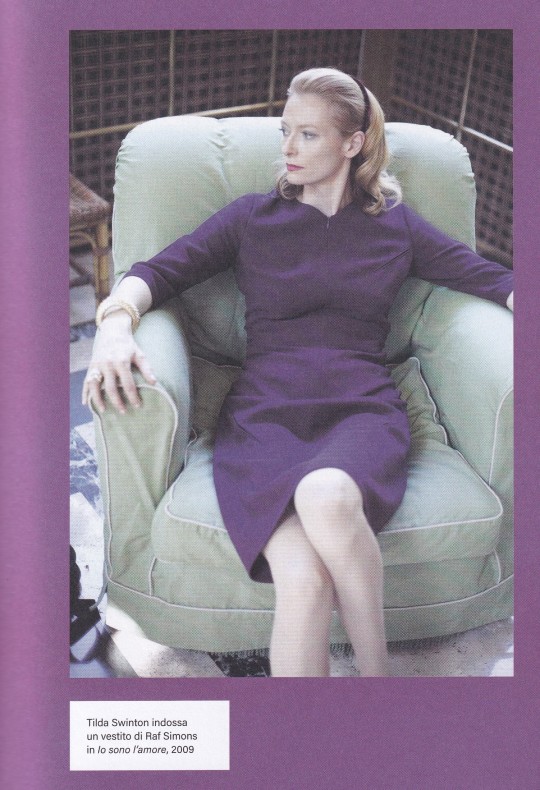
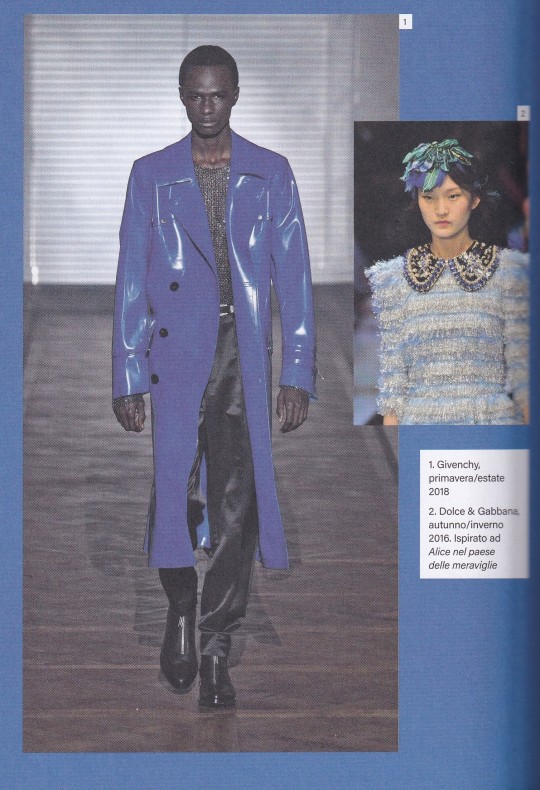

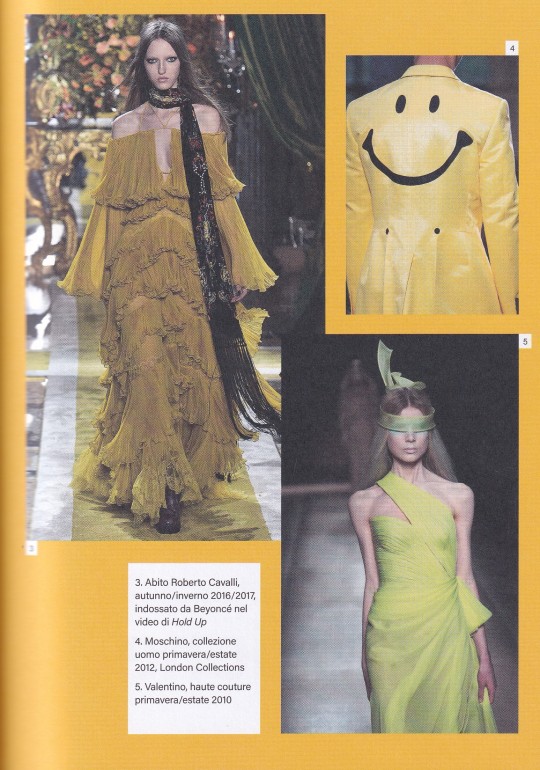
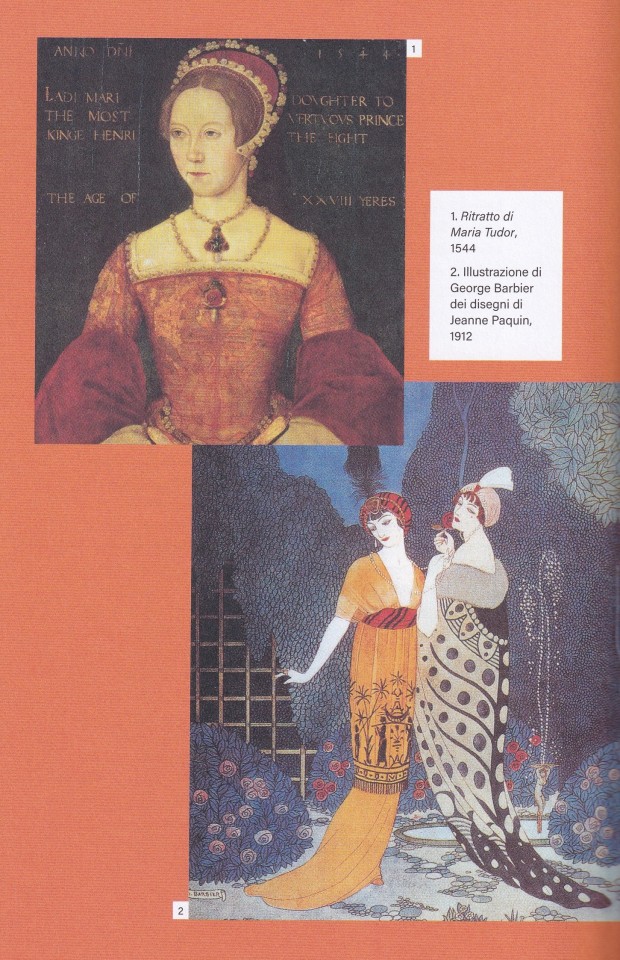


I colori della moda
Storia dell'abbigliamento in dieci colori
Caroline Young
24 Ore Cultura, Milano 2023, 256 pagine, 20×26 cm, ISBN 978- 88- 6648- 703-6
euro 29,00
email if you want to buy [email protected]
Elegantemente illustrato e con uno stile semplice e scorrevole, il volume racconta la storia del fashion attraverso dieci tonalità (nero, viola, blu, verde, giallo, arancione, marrone, rosso, rosa, bianco).
La storia della moda è scandita da grandi rivoluzioni (la moderna praticità degli abiti disegnati da Coco Chanel, l’audace invenzione della minigonna di Mary Quant…), vestiti iconici e sfilate indimenticabili. Dagli abiti rossi di Valentino al tubino nero di Chanel, dal rosa di Elsa Schiaparelli all’arancione di Hermès, il colore è indubbiamente un elemento fondamentale dello stile. Brillante ed esaustivo, questo volume riccamente illustrato vi accompagnerà attraverso dieci tonalità iconiche alla scoperta dei momenti chiave che hanno scandito la storia del fashion.
09/03/24
#colori moda#storia abbigliamento#10 colori#ner#viola#blu#verde#giallo#arancione#marrone#rosso#rosa#bianco#fashion history#fashion books#fashionbookmilano
3 notes
·
View notes
Text
Winter 2023 Blog Update (Part 3 of 6) ~ Lessons Learned: Conflict Management
Winter 2023 Blog Update (Part 3 of 6) ~ Lessons Learned: Conflict Management
#SelfHelp #ConflictManagement #DefenseMechanism #MarkBracket #BrenéBrown #GaborMaté #ObjectiveFeedback #JohnLencioni #EmotionalIntelligence #AnneDuke #CognitiveBias #Sadhguru
If we live long enough, it happens to us all: The world, full of cold indifference to our golden-calf agendas, infiltrates our beating heart with its ragged claws—and pulls. With a single gesture, the ego is uprooted, leaving our bare awareness of self throbbing in monolog: “Feel! CONNECT!! Change! GROW!!”
Eventually, we all stumble into conflicts that trigger us, challenging our self-awareness…

View On WordPress
#Anne Duke#Anne-Marie Marron#Brené Brown#Cognitive Bias#Conflict Management#Conflict Resolution#Decision Making#Defense Mechanisms#Dr. Gabor Maté#Elizabeth Earnshaw#Emotional Affirmation#Emotional Intelligence#Empathy#Interpersonal Boundaries#John Lencioni#Neel Burton#Objective Feedback#Personal Boundaries#Personal Update#Pscyhology of Emotions#Sadhguru#The Joe Rogan Experience#Tom Karl#Unlocking Us Podcast#Winter 2023 Update
0 notes
Text
Tag Game!
Tagged by: my darling @inthedayswhenlandswerefew
Your name? Mari
The last thing you listened to? “Stupida Allegria” - Emma Marrone
What are you wearing? Schrute Farms t-shirt and yoga pants
How tall are you? 5′4″
Piercings? Just the ears - I’ve had them since i was a kid but grew up into a person who doesn’t like wearing earrings. I will only wear them for really special occasions.
Tattoos? None.
Glasses? Contacts? Yep! Glasses.
Last drink? iced coffee with almond milk, sugar free vanilla, sprinkled with cinnamon also have my trusty hydroflask filled with water
Last thing you ate? homemade breakfast sandwich
Any pets? Two dogs - Chocolate and Bucky
Do you have a crush on anyone? Taron Egerton and Pedro Pascal. Other than that, no crushes at the moment.
Favorite fictional characters? Eddie Munson, Rafael Barba, Penelope Alvarez...just to name a few
A movie you think everyone should watch? Jurassic Park (if you haven’t already seen it), Under the Same Moon (if you’re in the mood to cry), La Bamba, Selena. I have a few more recs but these are the ones off the top of my head.
A book you think everyone should read? Well the last two books I read were Simu Liu’s We Were Dreamers and Jennette McCurdy’s I’m Glad My Mom Died. They were good reads and I recommend them. I definitely related to a lot of what Liu talked about in regard to his relationship with his parents. I have other recs but i have to look through my mini library. Especially since most of my books are non fiction and mostly science related. I’m also gonna add my lovely Maggie’s (@inthedayswhenlandswerefew) fics because I recommend every single one of them.
The last place you travelled? most of my traveling at the moment is for running errands but outside of that then it’s Crystal Lake in the San Gabriel Mountains. But the last time i traveled out of LA County and the state was Rhode Island (and that trip was 12 years ago)
8 notes
·
View notes